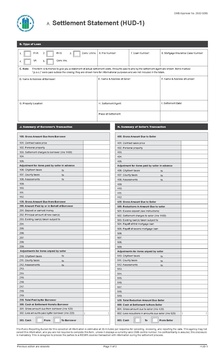HUD-1 Settlement Statement: Difference between revisions
No edit summary |
Cyberbot II (talk | contribs) Rescuing 1 sources. #IABot |
||
| Line 11: | Line 11: | ||
== References == |
== References == |
||
* [http://www.hud.gov/offices/hsg/sfh/res/respa_hm.cfm RESPA - Real Estate Settlement Procedures Act] |
* [https://web.archive.org/20081029032700/http://www.hud.gov:80/offices/hsg/sfh/res/respa_hm.cfm RESPA - Real Estate Settlement Procedures Act] |
||
* [http://www.thelegalassistant.com/blog/understanding-the-hud-1-settlement-statement/ Simple guide to the HUD-1 Settlement Statement] |
* [http://www.thelegalassistant.com/blog/understanding-the-hud-1-settlement-statement/ Simple guide to the HUD-1 Settlement Statement] |
||
Revision as of 09:01, 24 February 2016

The HUD-1 Settlement Statement is a standard form in use in the United States of America which is used to itemize services and fees charged to the borrower by the lender or broker when applying for a loan for the purpose of purchasing or refinancing real estate. HUD refers to the Department of Housing and Urban Development.
The borrower has the right to inspect the HUD-1 one day prior to day of settlement. The form is filled out by the settlement agent who will conduct the settlement.
Since 2010, the HUD-1 settlement statement also contains what is referred to as a Good Faith Estimate or GFE. This additional set of figures specifies estimated settlement figures provided by the lender upon application of the loan.
Borrowers may compare their Good Faith Estimate to the HUD-1 Settlement Statement and ask their lender or broker about any changes.
As part of new rules established by the CFPB effective October 3, 2015, the HUD-1 Settlement Statement became obsolete. It has been replaced by a document called the Closing Disclosure that consolidates the HUD-1, Good Faith Estimate, and Truth in Lending Act disclosures.
References
